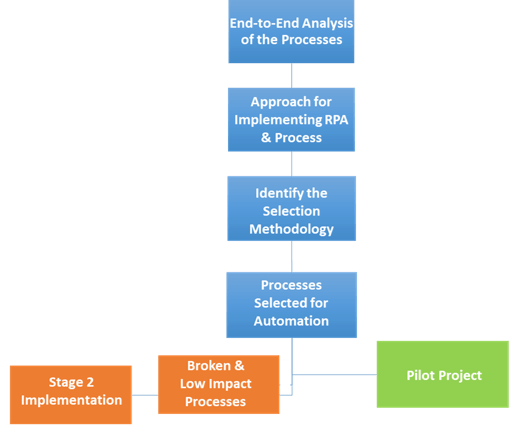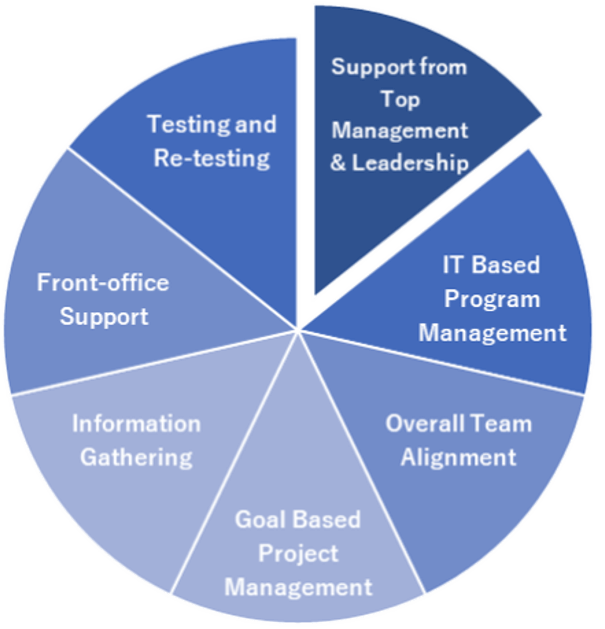INVITING APPLICATIONS
14th SSF EXCELLENCE AWARDS & RECOGNITION – 2025
LAST DATE: JUL-25 | APPLY NOW
The service industry is evolving very fast, and technology has been its biggest boon. Robotic Process Automation (RPA), which is the use of software programs with artificial intelligence and machine learning capabilities has fast found favour with companies looking to upscale their systems and improve processes, to provide a better experience for users and customers. RPA is highly advantageous for handling manual, high-volume, repeatable tasks that require a pre-fixed logic, such as queries, calculations, reconciliations, refunds, automated responses, and acknowledgements. By facilitating increased efficiency, rationalization of manpower, and a significantly reduced turnaround time for such tasks, it is able to respond faster, better, and more accurately.
For its shared services, Thomas Cook India, an integrated travel and travel related financial services company, decided to explore RPA and its benefits in the formative days of the service center. The aim of the center was to enable the consolidation and standardization of HR and Finance processes and deliver an enhanced service experience to its stakeholders. The first objective of the center was to identify the processes that could be integrated into the shared services setup and be the ideal candidates for RPA implementation. At the corporate level, the company included multiple units, each accompanied by their own unique processes and needs. Clearly there was a need to build a uniform operational backend that has one standard process for all units, responds fast to changing customer requirements, continuously boosts efficiency and delivers accurate output – all of it with reduced costs and improved business outcome metrics.
RPA, which is the use of software programs with artificial intelligence
and machine learning capabilities has fast found favour with companies
looking to upscale their systems and improve processes, to provide a
better experience for users and customers.
This is where RPA was brought in so that manual processes could be automated and made more efficient and effective.
Initially a comprehensive end-to-end analysis of the process was carried out in order to identify the best approach to implement RPA. The goal was not just to implement RPA, but also process transformation with a detailed examination of the processes and carefully consider the aspects that need to be fixed or standardized. The selection methodology for the pilot project was designed to prioritize inputs on our customer-facing process and transactional process.
Only those processes were selected for automation which were efficient and had a high impact on customer experience. The processes which were either broken or had low impact were excluded from this exercise and earmarked for later phases.

The pilot project turned out to be a successful experience. RPA was implemented in several existing processes, including HR and Finance departments to create maximum impact for both internal and external stakeholders. For instance, implementation of RPA on critical reconciliations helped assess potential risks on open items on a real-time basis. These processes currently have three bots in use which has shown an improvement in efficiency by 40%-50%.
Implementation of RPA on critical reconciliations helped assess potential risks
on open items on a real-time basis. These processes currently have three bots
in use which has shown an improvement in efficiency by 40%-50%.
The success of the pilot project was in essence with the joint effort of the entire organization. Each and every individual from the shared service center and the Head Office was convinced of the impact and contributed impact and contributed to its eventual success. For the pilot or proof-of-concept to succeed, the following factors played their significant roles:
- Support from top management and leadership
As a first step, the Head Office and the top management of the leadership teams had to be thoroughly convinced of the process and the eventual benefits that the project is likely to bring into the organization. The management had to consider all possible scenarios and approve on the business plans, which include amongst other things, budgets and synergy of the program with the overall service, business and IT implementation philosophy. The service center cannot and should not be considered as a stand-alone unit.
- Overall team alignment
As RPA is a new technology, it is critical that the entire team within the organization is in alignment. Whether it is the HR, IT, internal operations or any of the other teams, showcasing the POC and gaining a buy-in is essential. This helps in bringing in the necessary alignment within the organization, along with the all-round support needed to implement such a project.
- IT based program management
It is essential to ensure that the IT department defines and owns the infra requirements and other elements necessary for RPA implementation. This is because a large part of the existing infrastructure in organizations might be insufficient for RPA, and the requirements for which could be more specific.
- Information gathering
This is a very critical step, since the Subject Matter Expert (SME) or team leader's failure to provide the appropriate information to an RPA developer can significantly hinder the success of the coding and logic involved in it. It is extremely important for team leaders and process managers to be involved intricately in the implementation processes, with regular internal reviews being conducted to gauge the impact.
- Front-office support
To ensure a smooth end-to-end implementation, interaction with the relevant business teams is also critical. The concept of ‘substance over form’ was used and a number of changes suggested in the both upstream requirements as well as submissions, including adherence to particular formats. The adherence to specific and universal formats was essential to enable the bots to work properly. The new but enhanced processes and outcomes will certainly impact the partner functions. Seeking their support and keeping them in the loop by informing them of the new processes, its impact, the expected outcome and the benefits to the organization is a good way to ensure that the procedure is concluded smoothly.
- Goal based project management
It is important to keep the project focused purely on the pre-set goals, be it efficiency, quality, customer experience, or compliance. Once the project is underway, it is common for the team to go astray both in direction as well as budgets. The entire planning and detailing phase has to be a part of a well-orchestrated project management.
- Testing and re-testing
Right UAT testing is also particularly crucial, because in its absence one might have to keep developing or coding it for various exceptions, especially during its hyper-care phase. The inclusion of process steps within the RPA fold could well be impacted at this stage since the exception percentage should always be at a minimum. UAT includes comparing automated outputs with traditional manual outputs to reconfirm the accuracy of the bot.

Reasons for Success
Detailed planning, a watertight project management plan, along with a team that could coordinate within the organization and other stakeholders, while also looking at all the various milestones, raising red flags as necessary, and ensuring adherence to the appropriate time constraints, have together helped Thomas Cook India’s shared service center achieve its first milestone on its RPA journey.
"Not many shared services have been set up in the travel domain. However, as our company grew, there was a need for consolidation and standardization of processes to make sure multiple stakeholders receive the same experience. Thus, arrived the need for standardizing and consolidating the HR and finance throughout the group level.”
What lies ahead?
A full-scale implementation approach paper has already been created and the process of identifying the next steps is underway. The organization is gearing up for an exciting future, which is sure to bring in unbounded opportunities.
ABOUT THE AUTHOR

Geeta Degaonkar is currently the Senior Vice President – Shared Services – at Thomas Cook Group of companies. She is responsible to set up the Shared Services for the Thomas Cook Group of Companies. The SSC is over two years old and has successfully consolidated the HR & Finance COEs for the 3 Entities of Thomas Cook, SOTC & SITA. The scope is to Consolidate & Standardize Operations process across the entities under the Shared Service. Thomas Cook Group-SSC is in the process of evaluating various Technology interventions like RPA, Data Analytics to bring the Efficiencies, Accuracy, Nimbleness thus to impact the overall Bottom line & Customer experience.
Geeta has 17 years of experience in Operations/ Finance/ Business Consulting across Insurance & Business Process Management wherein she has worked with Companies like Bajaj Allianz, Principal Global Services, WNS Global Services & Tata Business Support Services.
She has handled Global Finance Business process for Clients like NHS-UK, British Airways, TUI, Expedia, Virgin Australia, Centrica, British Gas along with Tata Capital, Jaguar Land Rover-UK. She is extremely passionate of leveraging innovation & technology solution for building an efficient Operations framework for Finance organizations which deliver scalable operations whilst delivering cost benefits, efficiencies & real time relevant Data for decision making.
Geeta loves to read in her spare time. She loves to explore Art, history, & heritage through her Travel sojourns.



 Ask an Expert
Ask an Expert



